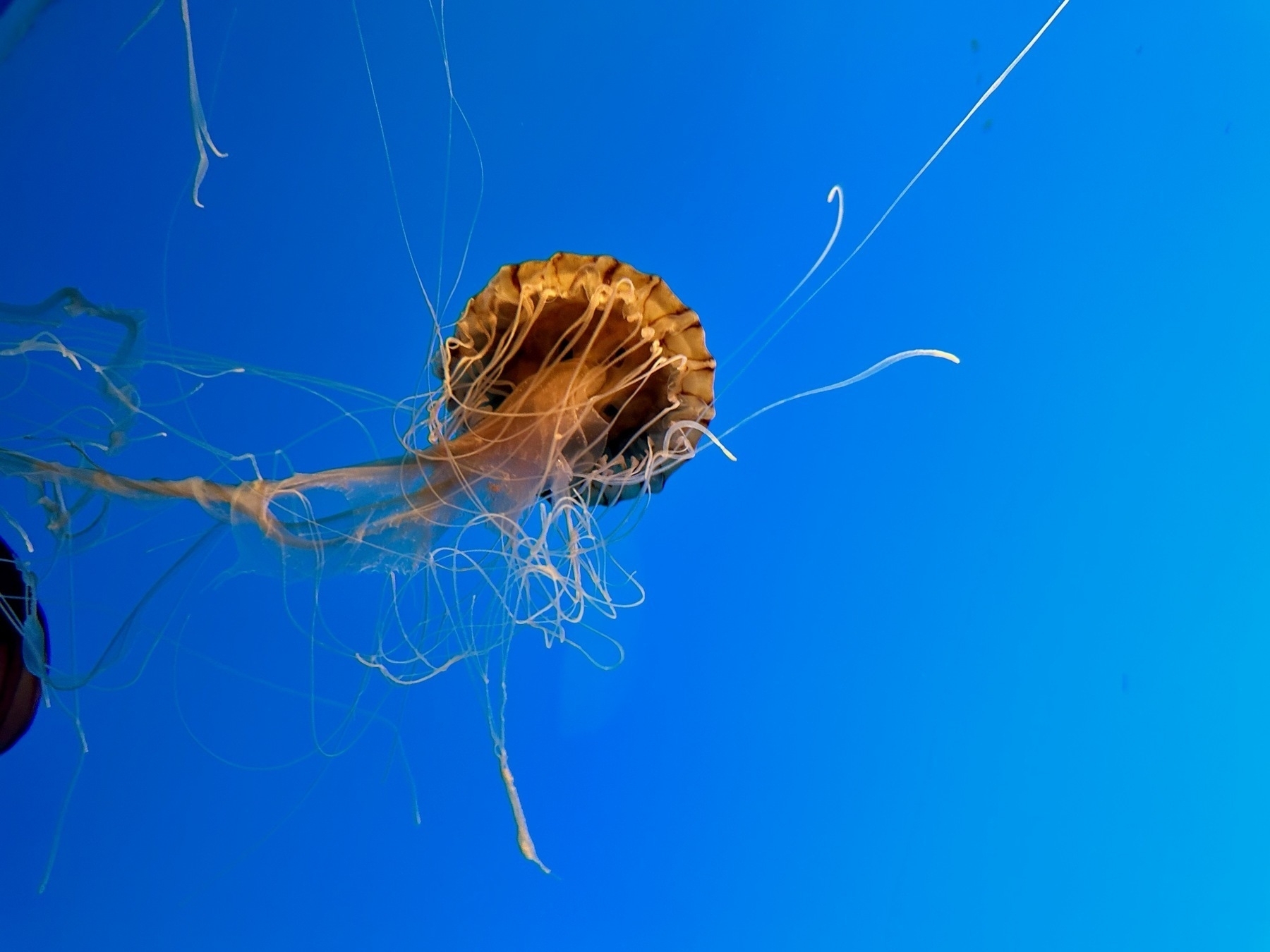Disruption as a concept is Lindy. Each particular manifestation of disruption, on the other hand…
From the The Car and Carriage Caravan Museum at the Luray Caverns.

From the Frist Art Museum in Nashville: some very old silk fabric.

Being stuck at an airport doesn’t have to be bad. Nashville, for example, has more than one airport restaurant with live music at all hours of the day (and night). Last year we spent a few hours waiting for a delayed flight at Ole Red.

The Statue of Liberty is made of copper, which long ago oxidized into a green patina: the perfect protection against the harsh salty airs of the Hudson/Upper New York Bay. So of course there is a campaign to remove that protection and make it shiny again.

From the National Aquarium in Baltimore, a non-fluorescent jellyfish. Its glow comes from background lighting conspiring with iPhone 15’s propensity to illuminate.
The Pacific sea nettle (Chrysaora fuscescens), if Google's image search is to be believed

The wild blue yonder, as seen from a submarine off the coast of Lahaina (2019). So it goes…

Haleakalā sunrise, from 4 years ago. A panorama shot would have shown the huge parking lot up top, which I wanted to avoid.

Who knew that operating a wishing well could be so lucrative?

From the archives: getting ready for a forest picnic.

An update on shark teeth
After our half-day trip to Calvert Cliffs which resulted in zero fossilized shark teeth found — and one given to us by a compassionate local — we decided that a thing worth doing was a thing worth doing well, and not having any other plans for the Labor Day weekend got the shabbiest, most cost-effective and affordable cabin available, and started combing the beach.
It worked! Nine teeth total, three of which found during a particularly lucky 15-minute stretch, and one of those which was dropped to the ground by a senior member of our party never to be recovered. So it goes… As luck would have it, another compassionate local — plenty of them are to be found wandering the Calvert Cliffs beaches, it turns out — saw us scrambling to find the tiny shark tooth we lost and gave us two from her own collection, which isn’t the same as finding your own, but it will make for a good dinner table reminiscence-slash-putdown of our fumbling senior.
The whole excercise was particularly enlightening to our middle-schooler, who in short order experienced the value of 1) experience, 2) patience, and 3) serendipity. And being the one whose fossil was lost also 4) forgiveness and 5) understanding. Well, one would hope. I’m pretty sure she stills holds a grudge.